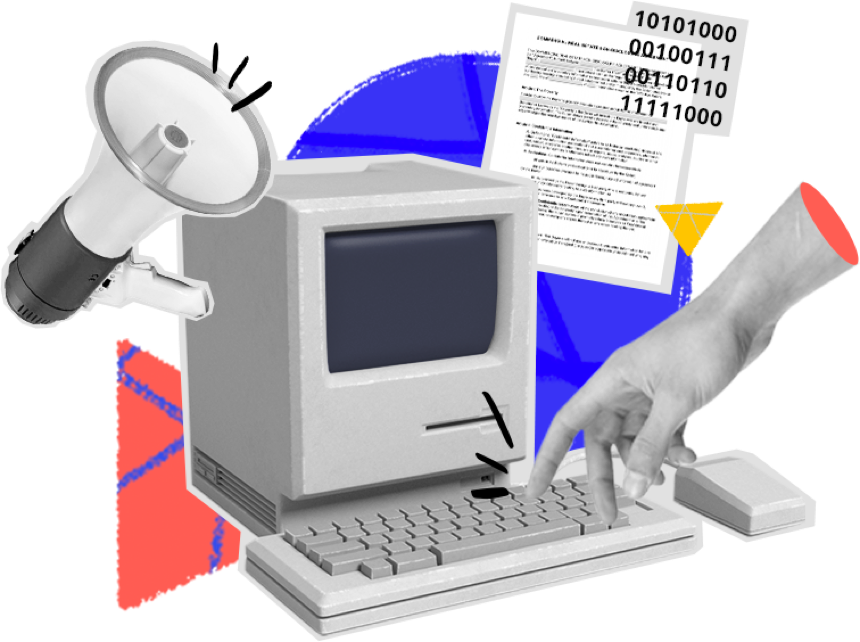Boost your ability to win more contracts: the benefits of contract negotiation automation

Whether you negotiate real estate leases, manufacturer warranties, job offers, sales quotations or budget approvals, you’re probably aware that one imperceptible mistake can cost a fortune. Staying on top of all the steps in a contract negotiation process isn’t easy, especially when several departments are involved. The amount of time demanded increases when you have to manage contracts across several office locations, time zones, or languages. Add to this the likelihood of human error, bottle-necked workflows, intermittent controls, and the inability to make changes, and you’ve got a recipe for disaster.
65% of legal professionals identified time lost on administrative tasks as their biggest pain point.
All these factors have one thing in common: they begin and end with manual work. That’s why contract negotiation process automation has become such a powerful tool for staying ahead of all the back and forth.
What is the contract negotiation process?
The contract negotiation process involves a strategic discussion aimed at reaching an agreement between all parties involved in the transaction. During this procedure, each party tries to persuade the other to agree with some terms and conditions. It’s not arguing but compromising: each side gives up something in order to reach an agreement.
A contract negotiation process is a give-and-take procedure that is conducted according to the terms of business and law. It’s an integral part of most transactions and most deals. And it’s function is critical because it allows all parties to contend for what they expect to receive from a deal.
Understanding contract negotiation processes
Let’s take a closer look at the contract negotiation process itself and what key factors come into play:
- Everything starts with an objective for entering into a contract. All parties should have a clear idea of what they want to gain from this particular transaction. Terms and conditions grow from there. Some of them may be considered as those that may be compromised in advance.
- Contract laws: Contracts are actually legally binding agreements. This means they may be regulated by the courts. Therefore, it’s always a good idea to get legal advice.
- Negotiation, the central element of the contract negotiation process, assumes backups.
- Goals and priorities. Define exactly what you need out of the transaction and what your bottom line is.
Once the contract is signed, all parties are legally bound to the terms of the contract, and non-compliance entails legal liability.
What is the best strategy for contract negotiation processes?
From a formal point of view, contract negotiation is the process of discussing and compromising terms and conditions to reach a final agreement between parties involved in a transaction. In fact, if we were to depict the entire process in a few words, it’s all about risks and revenues.
To avoid leaving resources on the table, pay close attention to the asks of your partner. The major aim of negotiation is to make a deal that benefits both. If you get your partner to accept your view of the situation, then you can influence the amount of risk involved.
Another point is to improve the process itself: avoid time-consuming processes with a potential for the interruption. Meet your counterpart’s needs and desires by working on a contract, during your contract negotiation process, in real-time by omitting time, geographical, language, or cultural gaps.
So there are two basic rules: putting customers first and doing more with less.
Well actually, there is a third rule –
How to reap the benefits of negotiation?

Get feedback
Feedback is when a client asks you to push back on certain terms. It may sound like “Sorry, we have to agree on that with our lawyer”, or “We need some time to consider the terms”. That time your customer takes to consider the terms is actually the time they’re preparing valuable feedback for you. So each time a point raises questions for your customers, it’s a good indication that something may need to change. But at the same time, any change can bear heavily on your business because the actual aim is to reach an agreement and receive the benefits of negotiation in as short a time as possible.
Make your contract data-driven
How to propose changes? Ask your partners what exactly isn’t working for them. Here are some common reasons for requested changes:
- Limits on obligations
- Possible risks
- Range of values
- Not understanding what that particular line means
Ask your partners about individual paragraphs and amendments. Ask why those terms or conditions are problematic. Their answers will help you see your weaknesses and how to turn them into strengths to reap the most benefits of your negotiation.
Pre-approve fall-back positions with legal
Once you identify a point that can be negotiated, estimate a counteroffer and your level of risk. By doing this, you can reconcile feedback without wasting time on legal advice for every particular case. Consider using simple wording to clarify complicated terms. Gather all facts, figures, financial statements, and documents as reinforcement for backing up your points of negotiation during the contract negotiation process.
Automate the process
Automated contractors already exist in everyday transactions such as your local supermarket, where negotiating is not possible. However, contract negotiation can be simplified for tasks such as data entry or managing reviews, using suitable workflow automation software. By implementing these types of solutions, the contract negotiation process can be completed online, faster, and more accurately.
Based on the average salaries of the parties involved, the IACCM estimates that the average cost of a simple contract is $6,900, and rises to more than $49,000 for more complex agreements.
Reducing the amount of time spent reviewing contracts and getting them signed off, through the use of a contract negotiation system, significantly reduces these associated costs and increases the benefits of this negotiation.
Watch the video below to learn how to use airSlate for your contract negotiation processes:
How do automated contract negotiation processes work?
To prove a point let’s move on from statistics to real contract negotiation automation steps.
Since airSlate is a great example of an all-in-one business automation platform, let’s see how to get all the benefits of negotiation in a single tab.
1. Use team workspace
With a safe business automation platform, you can add unlimited teammates and collaborate together in a single secure hub. It works better if you have the option to manage access permissions and protect your documents with a password.
2. Generate documents and assign responsibilities to recipients
Managing documents is an irreplaceable part of a contract negotiation process. Create documents with fillable fields and assign fields to particular recipients. airSlate allows you to pre-fill documents with data from CRM platforms, databases, or clouds.
3. Use No-code Bots
No-code Bots remind you when a contract has expired, needs to be re-negotiated, or renewed. Also, Bots populate documents with data or export data from your contacts to your CRM, such as Salesforce, or for example, to your Google spreadsheet.
4. Enjoy negotiating contracts in real-time
The ability to reach an agreement online boosts your productivity and expands the benefits of negotiation. Once your partners receive a contract, they can easily redline, add comments, or approve changes. You can track any action and get notified once your recipient opens a document.
5. Close your deal by eSigning the contract
Make sure that your business automation platform provides you with legally-binding eSignatures. Once the contract negotiation process is over, eSign the contract right away. With airSlate, you’re signing with a legally binding signature that is compliant with worldwide standards.
6. Automate sending invoices for signing when contracts are executed
At the end of the contract negotiation process, when all parties have executed a contract, automation Bots generate invoices and send them out to be eSigned and paid on time. You can set up automatic payments upon receipt and start calculating all the time you’re saving as a result of using Bots automation.
No human-factor errors, no delays, no wasted hours. Simple as that.
7. Evaluate the benefits of negotiation
Calculate how much time and money you’ve saved without unnecessary trips to and from a customer, use of postal services, or explanations for employees on how to reach an agreement more efficiently. Then, take a look at your deal results and figure out how much more profitable the contract negotiation process became.
And now the red line
Сontract negotiation is one of those things that requires time to learn. But how you approach it can make the process less painful. Knowing your worth helps to understand how much to ask for. And knowing the needs of your negotiating partner means knowing where to draw the line. Since most business processes can be automated, results will depend on the tools you use. By choosing the right automation platform for handling your contract negotiation processes, you can not only prevent common pitfalls but empower your best practices using digital methods.
Dive deeper into the automation of contract negotiation processes by checking out the airSlate Academy’s course on contract management. With the help of this course, you will become an expert in creating contracts, customizing them, and configuring automation with no-code Bots. The course is free, and once you successfully pass the exam at the end, you’ll receive a verified airSlate certificate. Enjoy developing new skills, implementing them into your business, and enjoying the benefits of negotiation.

